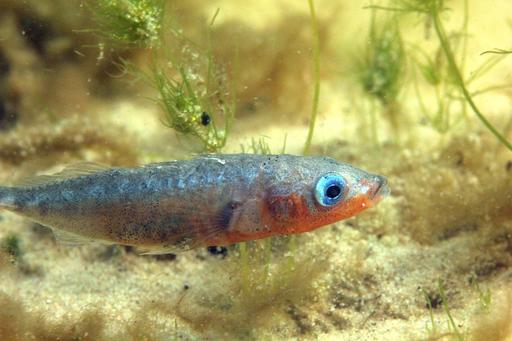
Why should we care?
There are several reasons why we should consider genetic biodiversity in management and conservation. In the Baltic Sea, facing more rapidly increasing temperatures and faster decreasing salinities than other marine areas over the coming century, genetic diversity will mitigate loss of species.
Genetic biodiversity improves ecosystem function
Genetic biodiversity contributes to ecosystem function much in the same way as species biodiversity – by increasing variability. Hereby, biodiversity on the genetic level provides a wider range of functions, including increased resistance to stress and new environmental states.

Changes in the genetic composition of populations will affect the function of the ecosystems, including production of goods and services. Just like changes in species composition of the ecosystem do.
Genetic biodiversity enables local adaptation
Genetic biodiversity is what makes local adaptation possible. It provides species and populations with the raw material to adapt to environmental changes. Individuals of a population that have evolved local adaptation to a specific area have inherited traits, making them more fit to live in this area than other individuals of the same species.

The eastern Baltic population of cod has evolved traits that make these cods able to live and reproduce in the low saline water of the Baltic Sea. For example, their eggs have increased buoyancy that prevent them sinking too deep. Cods from areas with higher salinity can not reproduce in this environment. Thus, they can not replace Baltic cod should the eastern population vanish. Losing this large predatory fish would affect the whole Baltic Sea ecosystem. Previous experience suggest that overfishing of cod will have cascading effects on the populations of herring, sprat, plankton and seaweeds.
If a locally adapted population goes extinct, it will take time to fill up this area again with individuals from other populations. They need to evolve relevant adaptations first. This is thus equivalent to local loss of a species.
Genetic biodiversity is an insurance
Genetic biodiversity provides the potential for a population to adapt to changes in the environment. With more genetic variation present in a population, the populations´ chances to survive future environmental changes increases. To be able to adapt to temperature increase, salinity decline, new predators or competitors, or new diseases or parasites, the populations need large pools of genetic variation.
Small populations have much less genetic variation than large populations. Several generations of small populations will rapidly reduce the genetic variation. Thus, small populations have far less chances than large populations to adapt to environmental changes.
"Useless" variation get crucial
Genetic variation that does not currently contribute to fitness may be useful in the future. As in this exemple with sticklebacks: Sticklebacks are found in both marine and freshwater environments. In freshwater, almost all individuals carry the “EDA allele”, a gene variant crucial for survival in freshwater environments. Sticklebacks living in marine environments also carry this allele, but typically by only a few percent of the individuals.
The low frequency in marine environments is explained by the fact that the EDA allele is weakly detrimental in marine environments. Thus, due to natural selection the allele will decrease in marine populations. However, the allele is not completely lost. In freshwater, natural selection will favour individuals carrying the EDA allele and it will again increase in frequency.

Although it´s hard to know which gene variants will be needed in the future, high levels of genetic diversity provides a population with more "tickets" in the lottery.
Genetic data in management and conservation
Genetic data is useful in management and conservation, for example to identify population structure, help prioritize and estimate effective population size. Click for more.
Legal commitments
The fundamental importance of genetic biodiversity is reflected in several commitments agreed upon internationally. The Convention of Biological Diversity, the EU Habitats Directive, the EU Marine Strategy Framework Directive and the Baltic Sea Action Plan all provide goals for genetic diversity.